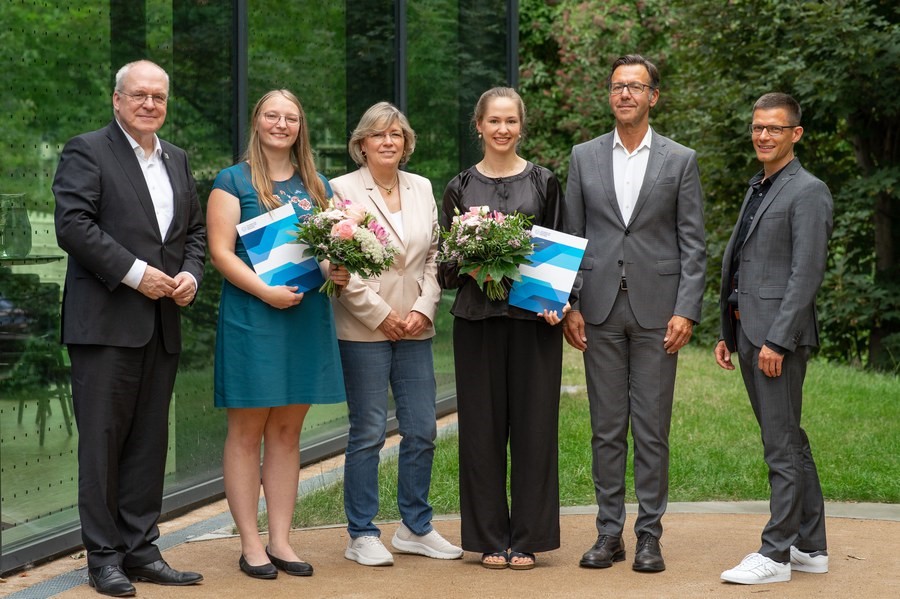Project areas
Experimental:
material development
Conceptualization and assessment of novel and optimized high-performance textiles, fibers and cement-based composites, with special attention to sustainability (projects A1-A4)
Experimental:
structural assessment
Investigation of the impact safety of full-scale structural elements and quantification of the beneficial contribution of newly developed mineral-bonded thin protective layers (projects A5-A6)
Numerical
simulation
Development of advanced and multiscale modelling approaches to understand the complex facets of the mechanics of composites and structures (projects B1-B4).
Data driven and
cross-disciplinary
Cross-disciplinary approaches to perform advanced photogrammetric analyses, sustainability and resilience assessments, and design optimization (projects C1-C3).
Most Recent Publications
C. Signorini, A. Nobili, M. Liebscher, J. Zhao, A.H. Ahmed, T. Köberle, V. Mechtcherine, Assessing the stress-transfer capability of mineral impregnated PBO yarns in a limestone calcined clay cement-based (LC3) matrix, Composites Part B: Engineering, 276 (2024), 111364
P. Máca, L. Leicht, T. Schubert, B. Beckmann, Experimentelle Untersuchung von Stahlbetonbalken ohne Bügelbewehrung unter Stoßbelastung, Beton- und Stahlbetonbau (2024) – DOI: 10.1002/best.202300101
L. C. Duran Vergara, F. Liebold, and H.-G. Maas, Analysis of the Ultrahigh-speed imaging for high-impact concrete deformation analysis in pre- and post-cracking stages, Applied Optics 2, (2024) 467-482
News
Kurt Beyer Prize

On July 26, 2024, Dr.-Ing. Lena Leicht, a member of the second cohort of the GRK 2250, was awarded the 2023 Kurt Beyer Prize for her dissertation, Characterization of Mineral-Bonded Composites for Impact Attenuation. She shares the award with Dipl.-Ing. Elisa
Kühne from the Faculty of Architecture. The Kurt Beyer Prize is awarded annually by HOCHTIEF Infrastructure GmbH (Germany Southeast Branch) to one or two outstanding theses — be it dissertations, diploma theses, or master’s theses—in the fields of civil engineering or architecture. The award, which includes a monetary prize of €5,000, is determined by a jury comprising representatives from the award’s sponsor and the faculties of architecture and civil engineering.
Dr.-Ing. Leicht’s work focuses on the development of reinforcing layers in concrete structures designed to mitigate the effects of sudden impact loads, such as those caused by vehicle collisions, rock falls, or explosives. These impacts involve high forces applied over just a few milliseconds. Her research led to the development of protective layers that can be applied to vulnerable parts of structures. These layers act as sacrificial components, absorbing impact energy and converting it into frictional and internal energy, thereby reducing the force transmitted to the load-bearing structure. This process also extends the duration of the impact, creating a dampening effect and preventing irreversible damage to the structure.
In his letter of recommendation for the award, Professor Manfred Curbach praised Dr Leicht’s achievements: “In a very short time of only three years, Dr Lena Leicht’s dissertation has produced very convincing results that serve to protect our buildings from impact loads. The multi-stage approach to material selection and analysis – research, small-scale experiments and tests at component level – proved to be methodologically excellent and led to an outstanding result in an area that has hardly been researched to date. It is particularly impressive that the preferred variant developed by Ms Leicht can completely prevent any damage to the test specimens, even with very fast and energy-intensive pulses. At the same time, Ms Leicht clearly identifies the need for further research and closely scrutinises her results. Ms Leicht’s conscientious work is thus an essential preliminary step in the further development of mineral-bonded reinforcing layers for extraordinary loads. Thanks to the excellent preparation of the data, further use of the series of measurements at the Institute for Concrete Structures, but also by other research groups, is possible without any problems“.
